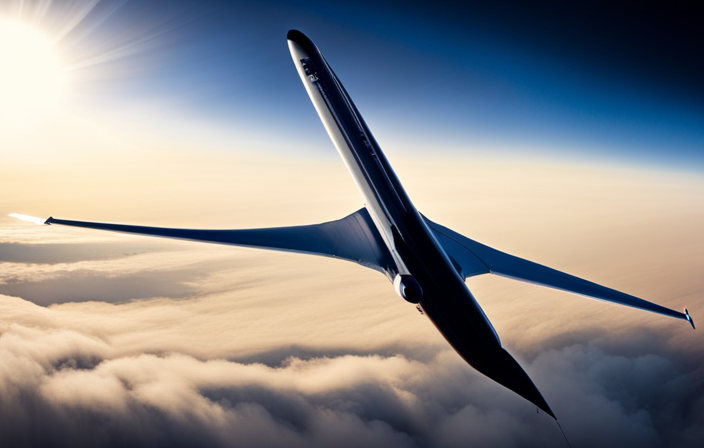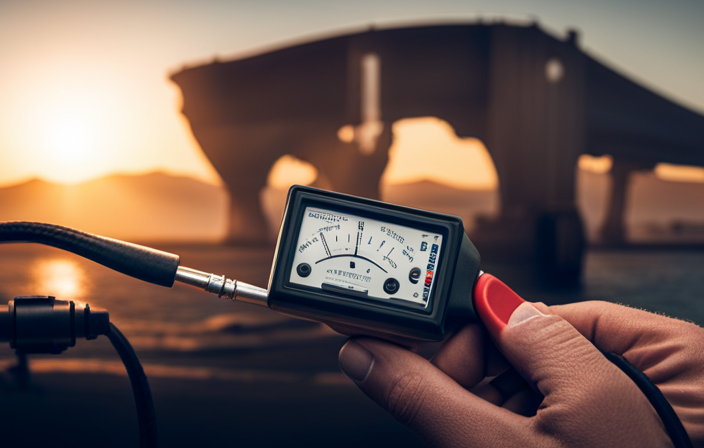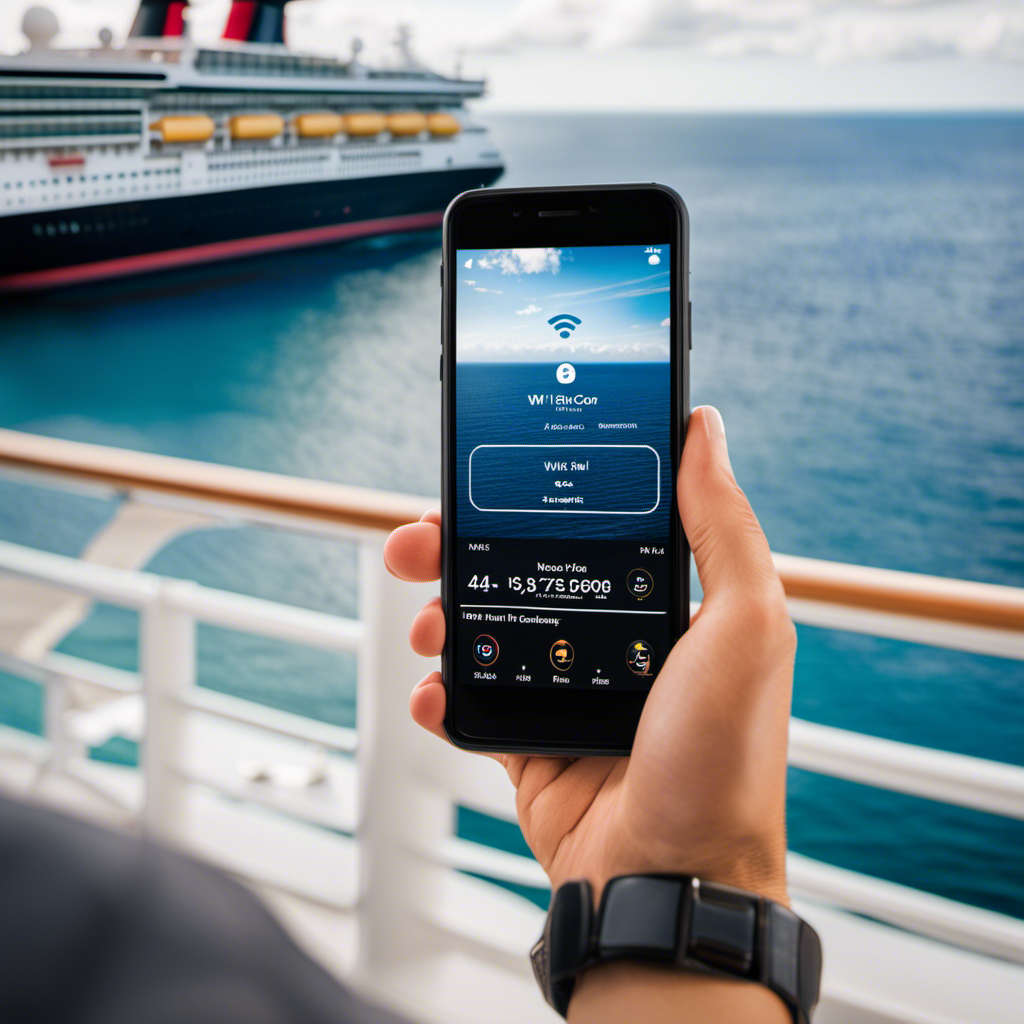I have always been captivated by the engineering wonders of the Concorde as an aviation enthusiast. One aspect that has intrigued me is determining the specific atmospheric layer in which the Concorde flew.
The answer lies in the stratosphere, the second layer of Earth’s atmosphere. Suspense builds as we delve into the Concorde’s features and performance, exploring its cruising altitude and interaction with the atmosphere.
Flying at an impressive height of around 60,000 feet, the Concorde soared above the turbulence and congestion of lower atmospheric layers. However, this high-altitude flight came with its fair share of challenges and impacts on the atmosphere.
It’s no wonder that the Concorde was eventually retired, but its legacy and influence on the future of supersonic travel remain. Join me as we uncover the details of the Concorde’s atmospheric adventures and explore the possibilities that lie ahead.
Key Takeaways
- The Concorde cruised in the stratosphere, which is the second layer of Earth’s atmosphere.
- The stratosphere is characterized by stable atmospheric conditions and contains the ozone layer.
- The Concorde faced challenges of high altitude flight in the stratosphere, including low temperatures, low air pressure, and reduced oxygen levels.
- The stratosphere’s ozone layer is crucial for protecting ecosystems and human health, regulating Earth’s climate, and absorbing and dispersing UV radiation.
Overview of the Concorde’s Features and Performance
The Concorde’s ability to cruise in the stratosphere was one of its most impressive features. Its features overview included a streamlined design, which reduced drag and allowed for faster speeds. The aircraft was equipped with four powerful engines, capable of generating thrust and enabling it to reach a maximum speed of Mach 2.04.
Its performance details were equally remarkable, with a cruising altitude of about 60,000 feet, where the air density was significantly lower. This allowed the Concorde to fly above most weather disturbances, ensuring a smooth and comfortable journey for passengers. The stratosphere, located between the troposphere and the mesosphere, provided the ideal conditions for the Concorde’s high-speed flights.
As we delve deeper into the layers of Earth’s atmosphere, we will explore how the Concorde operated within this unique environment.
The Layers of Earth’s Atmosphere
Explore Earth’s atmosphere and discover that the Concorde reached its cruising altitude in the stratosphere, where temperatures can reach as low as -60 degrees Celsius.
The stratosphere is the second layer of Earth’s atmosphere, located above the troposphere and below the mesosphere. It extends from about 10 to 50 kilometers above the Earth’s surface.
This layer is characterized by stable atmospheric conditions and contains the ozone layer, which absorbs harmful ultraviolet radiation from the sun.
The challenges of high altitude flight in the stratosphere include low temperatures, low air pressure, and reduced oxygen levels. These conditions require specialized engineering and design to ensure the safety and performance of aircraft.
Additionally, the stratosphere’s composition consists mainly of nitrogen, oxygen, and ozone, with trace amounts of other gases.
Transitioning to the subsequent section, the Concorde’s cruising altitude in the stratosphere allowed it to achieve its remarkable speed and efficiency in flight.
The Concorde’s Cruising Altitude
Reaching its cruising altitude in the stratosphere, the Concorde soared through the skies, embracing the icy embrace of temperatures as low as -60 degrees Celsius.
At this altitude, it achieved a speed of Mach 2, twice the speed of sound, allowing it to cover vast distances in record time.
The Concorde’s safety was meticulously engineered, with its aerodynamic design minimizing drag and enhancing stability. Its powerful engines, coupled with its lightweight construction, ensured optimal performance during flight.
The aircraft’s advanced navigation systems and onboard sensors constantly monitored atmospheric conditions, ensuring a smooth and secure journey for passengers.
The Concorde’s interaction with the atmosphere was a delicate dance, with its streamlined shape and powerful engines propelling it forward while its advanced systems carefully adjusted to changing air densities.
This seamless integration allowed the Concorde to effortlessly traverse the skies, leaving a lasting legacy in the world of aviation.
The Concorde’s Interaction with the Atmosphere
Soaring through the stratosphere, the Concorde effortlessly embraced the extreme cold and achieved unprecedented speeds, leaving a lasting mark on aviation history. As it cut through the air, the Concorde’s interaction with the atmosphere was a careful dance of precision and power.
The aircraft’s sleek design minimized drag, allowing it to maintain its high speeds. However, its powerful engines also had an effect on the climate. The Concorde’s exhaust emissions released high levels of nitrogen oxides, which are known to contribute to the depletion of ozone in the stratosphere.
This interaction with weather and its impact on climate were important considerations for the aircraft’s operation. Transitioning into the subsequent section about the challenges of flying in the stratosphere, the Concorde’s interaction with the atmosphere presented unique obstacles that had to be overcome.
Challenges of Flying in the Stratosphere
Navigating through the stratosphere presents its own set of challenges – can you imagine what it feels like to fly at such high altitudes where the air is thin and the temperature drops drastically? Stratospheric flight challenges arise due to the unique conditions found in this layer of the atmosphere.
Here are some specific challenges faced during this type of flight:
-
Altitude limitations: The stratosphere is located between 10 to 50 kilometers above the Earth’s surface. At such high altitudes, the air density decreases significantly, making it difficult for aircraft to generate enough lift. This imposes limitations on the maximum altitude that can be reached during stratospheric flight.
-
Temperature extremes: As we ascend into the stratosphere, the temperature drops rapidly. At the top of the layer, temperatures can reach as low as -80 degrees Celsius. These extreme temperatures can pose challenges in terms of maintaining the structural integrity of the aircraft and also impact the performance of the engines.
These challenges of stratospheric flight highlight the delicate balance between technology and the natural environment. Transitioning into the subsequent section about ‘the importance of the ozone layer’, it becomes evident that understanding the stratosphere and its challenges is vital for preserving this crucial atmospheric layer.
The Importance of the Ozone Layer
The ozone layer is vital for the well-being of our planet. It acts as a barrier, absorbing and dispersing much of the sun’s UV radiation before it reaches the Earth’s surface. This protection is crucial for maintaining the health of ecosystems and preventing damage to DNA, harm to marine life, and skin cancer in humans. The ozone layer also plays a critical role in regulating the Earth’s climate by influencing atmospheric temperature and circulation patterns. As we delve into the impacts of the Concorde on the atmosphere, it is essential to understand the significance of the ozone layer and the implications of its potential disruption.
Impacts of the Concorde on the Atmosphere
The Concorde, a supersonic passenger jet, had significant impacts on the atmosphere that raised emissions and environmental concerns. The aircraft’s engines emitted large amounts of carbon dioxide, nitrogen oxides, and water vapor, contributing to air pollution and global warming.
Additionally, the noise generated by the Concorde’s sonic boom and engine noise caused noise pollution, which had negative effects on both humans and wildlife.
Emissions and Environmental Concerns
You can imagine the Concorde cruising in the layer of the atmosphere like a graceful bird soaring through the sky. However, this supersonic aircraft had significant emissions and environmental concerns. Here are three key points to consider:
-
Emissions Reduction: The Concorde’s engines emitted large amounts of carbon dioxide (CO2) and nitrogen oxides (NOx) into the atmosphere. With increasing environmental regulations, the aircraft faced mounting pressure to reduce its emissions.
-
Environmental Regulations: The Concorde had to comply with stringent regulations aimed at minimizing its impact on the environment. These regulations focused on reducing emissions and noise pollution caused by the aircraft.
-
Technological Improvements: To meet emissions reduction targets, the Concorde underwent several technological advancements, such as the addition of catalytic converters and improved engine designs.
As we delve into the subsequent section about ‘noise pollution,’ it becomes evident that the Concorde’s environmental impact extended beyond just emissions.
Noise Pollution
After discussing the emissions and environmental concerns associated with the Concorde, let’s now delve into the issue of noise pollution caused by this supersonic aircraft.
The Concorde’s engines produced a tremendous amount of noise during takeoff and landing, as well as during its supersonic flight. This noise was not only disruptive to people living near airports, but it also had adverse effects on human health. Prolonged exposure to high levels of aircraft noise can lead to various health problems, including stress, sleep disturbances, and cardiovascular issues.
Moreover, the noise pollution generated by the Concorde had a negative impact on wildlife and disrupted their natural habitats. Considering the detrimental effects of the Concorde’s noise pollution, it becomes clear why the retirement of this aircraft was necessary.
The retirement of the Concorde, however, was not solely motivated by noise pollution concerns.
The Retirement of the Concorde
Imagine cruising through the skies on the Concorde, feeling the exhilaration of being aboard one of the world’s fastest commercial aircraft. However, the retirement of the Concorde in 2003 had significant implications.
Technological advancements in aviation had rendered the Concorde outdated and economically unviable. Its high operating costs, noise pollution, and limited range made it less desirable for both passengers and airlines. Despite its iconic status, the retirement of the Concorde marked the end of an era. It highlighted the need for more efficient and environmentally friendly aircraft.
The retirement also paved the way for advancements in supersonic travel, with companies like Boom Supersonic working on new supersonic jets that aim to address the limitations of the Concorde.
Transitioning into the subsequent section, the legacy and influence of the Concorde continue to shape the future of aviation.
Legacy and Influence of the Concorde
Step aboard the Concorde’s final flight and experience the lasting impact it left on the future of aviation. The Concorde was not just a technological marvel, but also a symbol of luxury and sophistication. Passengers on board were treated to state-of-the-art inflight entertainment and a host of luxury amenities. To truly understand the legacy of the Concorde, let’s take a closer look at its influence on aviation.
| Inflight Entertainment | Luxury Amenities |
|---|---|
| Personal TV screens | Champagne bar |
| Movie selection | Gourmet meals |
| Music library | Comfortable seats |
These features set a new standard for the industry, and many of them are still enjoyed by travelers today. The Concorde not only revolutionized supersonic travel but also redefined the passenger experience. Its influence can be seen in the continuous efforts to improve inflight entertainment and provide top-notch amenities. As we explore the future of supersonic travel, we can build upon the Concorde’s legacy and strive for even greater advancements.
Future of Supersonic Travel
As we look to the future, it’s essential to consider the legacy and influence of the Concorde in shaping the future of supersonic travel.
The Concorde may no longer be in service, but its impact is undeniable. Now, the focus is on developing sustainable supersonic travel that meets the demands of the modern world.
Technological advancements are key in achieving this goal. By integrating new materials and propulsion systems, supersonic aircraft can become more fuel-efficient and environmentally friendly. Additionally, advancements in aerodynamics and noise reduction technologies will minimize the impact on local communities.
The future of supersonic travel lies in striking a balance between speed and sustainability. With continued innovation and collaboration, we can create a new era of supersonic travel that’s both efficient and environmentally responsible.
Frequently Asked Questions
How fast did the Concorde fly in the stratosphere?
The Concorde flew at an incredible speed in the stratosphere. With its powerful engines and aerodynamic design, it reached speeds of up to 1,354 miles per hour, allowing for efficient and swift travel at high altitudes.
What is the significance of the ozone layer in relation to the Concorde’s cruising altitude?
The ozone layer is of utmost importance due to its role in protecting the Earth from harmful ultraviolet (UV) radiation. Its depletion leads to increased UV exposure, which can have detrimental effects on human health and the environment.
Were there any environmental concerns regarding the Concorde’s impact on the atmosphere?
There were significant environmental concerns regarding the Concorde’s impact on the ozone layer. The high altitude and speed of the aircraft resulted in the emission of nitrogen oxides, which contributed to ozone depletion.
What were the main challenges faced by the Concorde while flying in the stratosphere?
What were the main challenges faced by the Concorde while flying in the stratosphere? How did it maintain its speed in this layer of the atmosphere? The Concorde faced challenges such as temperature extremes, air density changes, and maintaining engine efficiency at high altitudes.
How did the retirement of the Concorde impact the future of supersonic travel?
The retirement of the Concorde had a significant impact on the future of supersonic travel and the aviation industry. It created a void in commercial supersonic aviation, hindering the development and advancement of this technology.
Conclusion
In conclusion, the Concorde’s ability to cruise in the stratosphere, specifically in the layer known as the tropopause, allowed it to achieve unprecedented speeds and efficiency.
With its incredible performance, the Concorde revolutionized air travel and set a new standard for supersonic flight.
One hypothetical example that illustrates the Concorde’s impact is imagining a businessman traveling from New York to London in just three hours, compared to the typical eight-hour flight.
This would’ve allowed for greater productivity and efficiency in conducting global business.










